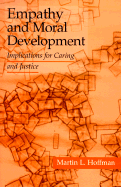Book contents
- Frontmatter
- Contents
- Acknowledgments
- 1 Introduction and Overview
- Part I Innocent Bystander
- Part II Transgression
- Part III Virtual Transgression
- Part IV Is Empathy Enough?
- 8 Empathy's Limitations: Over-Arousal and Bias
- Part V Empathy and Moral Principles
- Part VI Culture
- Part VII Intervention
- References
- Author Index
- Subject Index
8 - Empathy's Limitations: Over-Arousal and Bias
Published online by Cambridge University Press: 05 June 2012
- Frontmatter
- Contents
- Acknowledgments
- 1 Introduction and Overview
- Part I Innocent Bystander
- Part II Transgression
- Part III Virtual Transgression
- Part IV Is Empathy Enough?
- 8 Empathy's Limitations: Over-Arousal and Bias
- Part V Empathy and Moral Principles
- Part VI Culture
- Part VII Intervention
- References
- Author Index
- Subject Index
Summary
Having pointed up empathic motivation's positive contributions to prosocial moral action, I now turn to empathic motivation's limitations, expanding on the limitations I noted some time ago (Hoffman, 1984b, 1987). The limitations are due mainly to empathy's dependence on the intensity and salience of distress cues and the relationship between the victim and the observer. The first limitation is this: We generally expect the intensity of empathic arousal to increase with the salience and intensity of the victim's distress: the more intense and salient the cues of distress, the more intense the observer's empathic distress. But, if the signs of distress are too intense and salient, the observer's empathic distress may become aversive enough to be transformed into a feeling of personal distress. I call this “empathic over-arousal.”
The second limitation is empathy's vulnerability to two types of bias: “familiarity bias” and “here-and-now bias.” The research (chapter 2) shows that most people empathize with and help others in distress, including strangers (the victims in most of the research were strangers), but there is also evidence that most people empathize to a greater degree (their threshold for empathic distress is lower) with victims who are family members, members of their primary group, close friends, and people whose personal needs and concerns are similar to their own. And, because most empathyarousing processes (at least the primitive, less cognitive ones) depend on immediate situational and personal cues, people are vulnerable to empathic bias in favor of victims who are present in the immediate situation.
- Type
- Chapter
- Information
- Empathy and Moral DevelopmentImplications for Caring and Justice, pp. 197 - 218Publisher: Cambridge University PressPrint publication year: 2000
- 3
- Cited by



